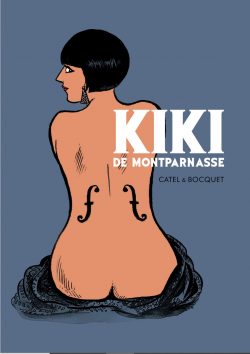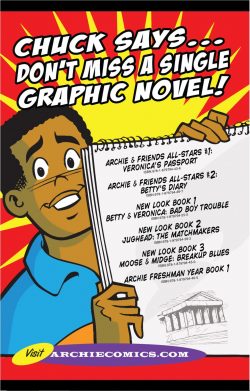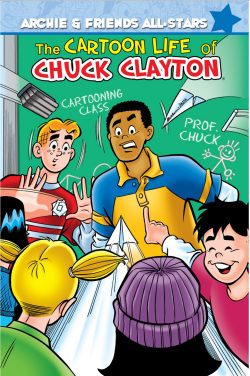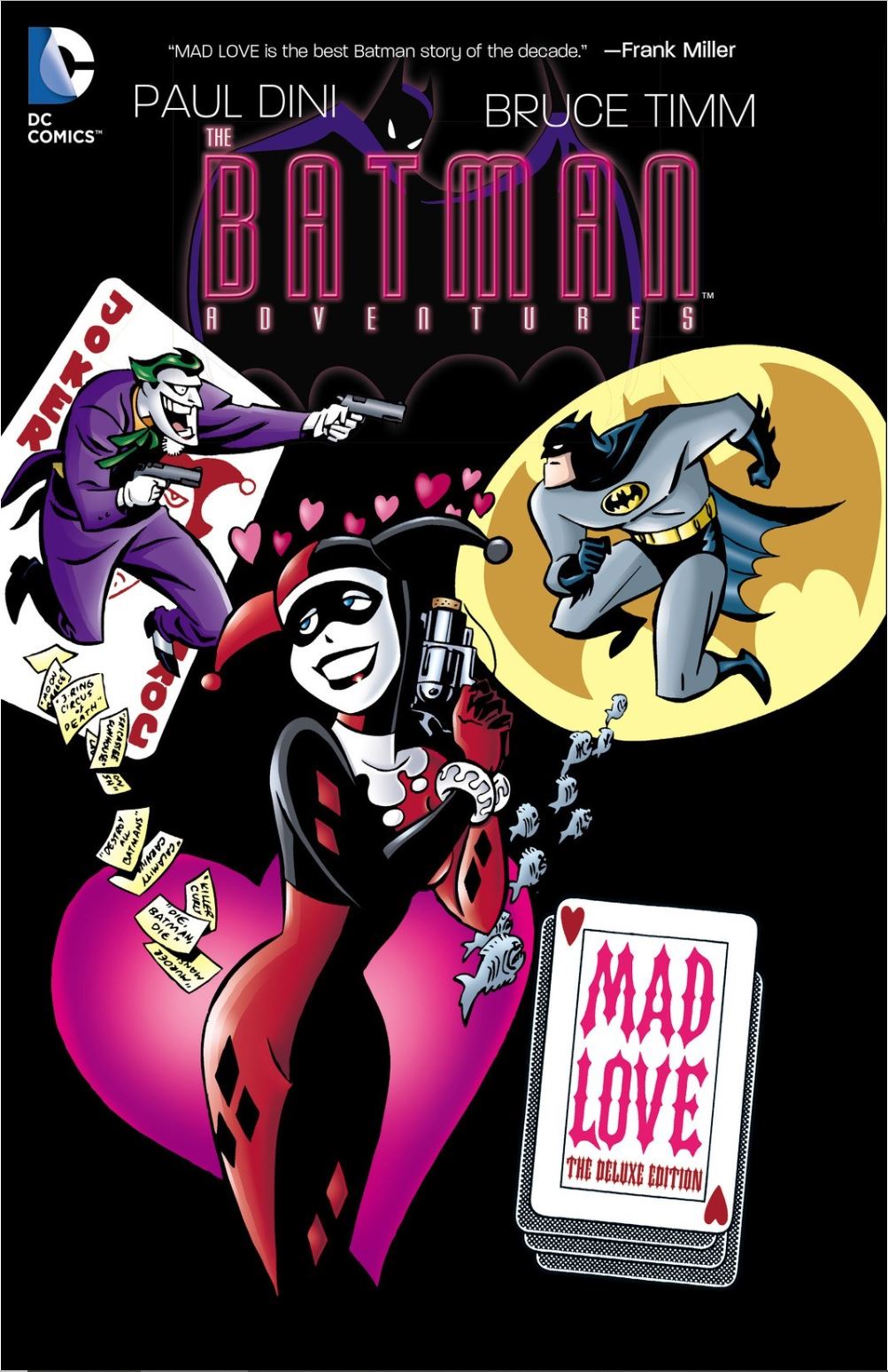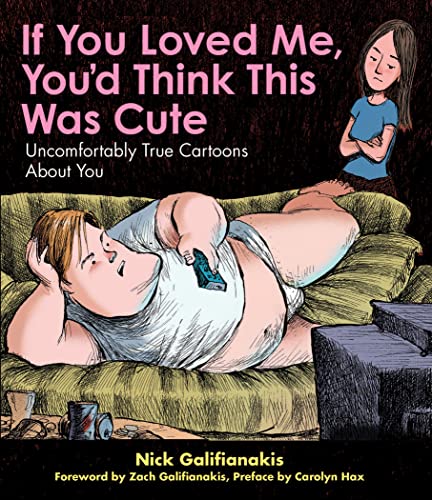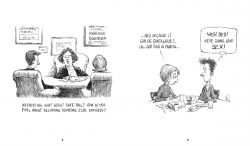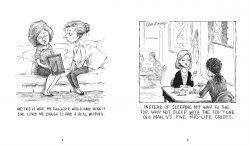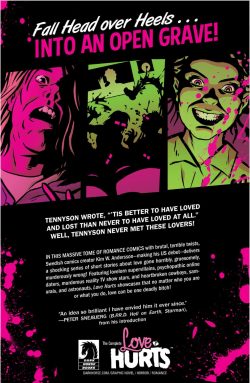

By George Herriman (Fantagraphics Books)
ISBN: 978-1-68396-255-7 (HB/Digital edition)
In a field positively brimming with magnificent and eternally evergreen achievements, Krazy Kat is – for most cartoon cognoscenti – the pinnacle of pictorial narrative innovation: a singular and hugely influential body of work which shaped the early days of the comics industry whilst elevating itself to the level of a treasure of world literature.
Krazy & Ignatz, as it is dubbed in these gloriously addictive archival tomes from Fantagraphics, is a creation which must always be appreciated on its own terms. Over the decades the strip developed a unique language – simultaneously visual and verbal – whilst delineating the immeasurable variety of human experience, foibles and peccadilloes with unfaltering warmth and understanding…and without ever offending anybody. Baffled millions certainly, but offended? …No.
It certainly went over the heads and around the hearts of many, but Krazy Kat was never a strip for dull, slow or unimaginative people: those who can’t or simply won’t appreciate complex, multilayered verbal and cartoon whimsy, absurdist philosophy or seamless blending of sardonic slapstick with arcane joshing. It is still the closest thing to pure poesy narrative art has ever produced.
Think of it as Dylan Thomas and Edward Lear playing “I Spy” with James Joyce amongst beautifully harsh, barren cactus fields whilst Gabriel García Márquez types up shorthand notes and keeps score…
George Joseph Herriman (August 22, 1880-April 25, 1944) was already a successful cartoonist and journalist in 1913 when a cat and mouse who’d been noodling about at the edges of his domestic comedy strip The Dingbat Family/The Family Upstairs graduated to their own feature.
Mildly intoxicating and gently scene-stealing, Krazy Kat debuted in William Randolph Hearst’s New York Evening Journal on Oct 28th 1913: a 5-day-a-week monochrome comedy strip. By sheer dint of the overbearing publishing magnate’s enrapt adoration and direct influence and interference, it gradually and inexorably spread throughout his vast stable of papers.
Although Hearst and a host of the period’s artistic and literary intelligentsia (such as Frank Capra, e.e. Cummings, Willem de Kooning, H.L. Mencken and more) adored the strip, many local and regional editors did not; taking every potentially career-ending opportunity to drop it from those circulation-crucial comics sections designed to entice Joe Public and the general populace.
The feature found its true home and sanctuary in the Arts and Drama section of Hearst’s papers, protected there by the publisher’s unshakable patronage. Eventually enhanced (in 1935) with the cachet of enticing colour, Kat & Ko. flourished unhampered by editorial interference or fleeting fashion, running generally unmolested until Herriman’s death on April 25th 1944 from cirrhosis caused by Non-alcoholic fatty liver disease. Eschewing standard industry policy of finding a substitute creator, Hearst decreed Krazy Kat would die with its originator and sole ambassador.
The premise is simple: Krazy is an effeminate, dreamy, sensitive and romantic feline of variable gender, hopelessly smitten with venal, toxically masculine everyman Ignatz Mouse. A spousal abuser and delinquent father, the little guy is rude, crude, brutal, mendacious and thoroughly scurrilous.
Ignatz is a proudly unreconstructed male and early forerunner of the men’s rights movement: drinking, stealing, fighting, conniving, constantly neglecting his wife and many children and always responding to Krazy’s genteel advances of friendship (…or more) by clobbering the Kat with a well-aimed brick. These he obtains singly or in bulk from local brick-maker Kolin Kelly. The smitten kitten always misidentifies these gritty gifts as tokens of equally recondite affection, showered upon him/her/they in the manner of Cupid’s fabled arrows…
Even in these earliest tales, it’s not even a response, except perhaps a conditioned one: the mouse spends the majority of his time, energy and ingenuity (when not indulging in crime or philandering) launching missiles at the mild moggy’s mug. He can’t help himself, and Krazy’s day is bleak and unfulfilled if the adored, anticipated assault fails to happen.
The final critical element completing an anthropomorphic emotional triangle is lawman Offissa Bull Pupp. He’s utterly besotted with Krazy, professionally aware of the Mouse’s true nature, but hamstrung by his own amorous timidity and sense of honour from permanently removing his devilish rival for the foolish feline’s affections. Krazy is – of course – blithely oblivious to the perennially “Friend-Zoned” Pupp’s dolorous dilemma…
Secondarily populating the mutable stage are a large, ever-changing supporting cast of inspired bit players including relentless deliverer of unplanned babies Joe Stork; unsavoury Hispanic huckster Don Kiyoti, hobo Bum Bill Bee, self-aggrandizing Walter Cephus Austridge, inscrutable, barely intelligible (and outrageously unreconstructed by modern standards!) Chinese mallard Mock Duck, portraitist Michael O’Kobalt, dozy Joe Turtil and snoopy sagacious fowl Mrs. Kwakk Wakk, often augmented by a host of audacious animal crackers – such as Krazy’s niece Ketrina – all equally capable of stealing the limelight and supporting their own features…
The exotic, quixotic episodes occur in and around the Painted Desert environs of Coconino (patterned on the artist’s vacation retreat in Coconino County, Arizona) where surreal playfulness and the fluid ambiguity of the flora and landscape are perhaps the most important member of the cast.
The strips themselves are a masterful mélange of unique experimental art, cunningly designed, wildly expressionistic (often referencing Navajo art forms) whilst graphically utilising sheer unbridled imagination and delightfully evocative lettering and language. This last is particularly effective in these later tales: alliterative, phonetically, onomatopoeically joyous with a compellingly melodious musical force and delicious whimsy (“Ignatz Ainjil” or “I’m a heppy, heppy ket!”).
Yet for all our high-fallutin’ intellectualism, these comic adventures are poetic, satirical, timely, timeless, bittersweet, self-referential, fourth-wall bending, eerily idiosyncratic, outrageously hilarious escapades encompassing every aspect of humour from painfully punning shaggy dog stories to riotous, violent slapstick. Herriman was also a master of action: indulging in dialogue-free escapades as captivating as any Keystone Kop or Charlie Chaplin 2-reeler. Kids of any age will delight in them as much as any pompous old git like me and you…
Collected in a comfortably hefty (257 x 350 mm) hardcover edition – and available as a suitably serendipitous digital edition, this cartoon wonderment is bulked up with a veritable treasure trove of unique artefacts: plenty of candid photos, correspondence, original strip art and astounding examples of Herriman’s personalised gifts and commissions (gorgeous hand-coloured artworks featuring the cast and settings), as well as a section on the rare merchandising tie-ins and unofficial bootleg items.
These marvels are supported by fascinating insights and crucial history in Bill Blackbeard’s essay ‘The Kat’s Kreation’: detailing the crackers critters’ development and their creators’ circuitous path to Coconino, via strips Lariat Pete, Bud Smith, The Boy Who Does Stunts, Rosy’s Mama, Zoo Zoo, Daniel and Pansy, Alexander, Baron Mooch and key stepping stone The Dingbat Family…
From there we hie straight into the romantic imbroglio with ‘The Complete Krazy Kat Sunday Strips of 1916’ beginning with the full-page (17 panels!) episode for April 23rd wherein the Kat rudely absconds from a picnic to carry out a secret mission of mercy and sweet sentiment…
The peculiar proceedings were delivered – much like Joe Stork’s bundles of joy and responsibility – every seven days, ending that first year on December 31st. Across that period, as war raged in Europe and with America edging inexorably closer to joining in the Global Armageddon, the residents of Coconino sported and wiled away their days in careless abandon: utterly embroiled within their own – and their neighbours’ – personal dramas.
Big hearted Krazy adopts orphan kitties, accidentally goes boating and ballooning, saves baby birds from predatory mice and rats, survives pirate attacks and energy crises, constantly endures assault and affectionate attempted murder and does lots of nothing in an utterly addictive, idyllic and eccentric way. We see nature repeat itself with the introduction of our star’s extended family in “Kousins” Krazy Katbird and Krazy Katfish…
Always our benighted star gets hit with bricks: many, variegated, heavy and forever evoking joyous, grateful raptures and transports of delight from the heartsore, hard-headed recipient…
Often Herriman simply let nature takes its odd course: allowing surreal slapstick chases, weird physics and convoluted climate carry the action, but gradually an unshakeable character dynamic was forming involving love and pain, crime and punishment and – always – forgiveness, redemption and another chance for all transgressors and malefactors…
In ‘The Complete Krazy Kat Sunday Strips of 1917’ – specifically January 7th to December 30th – the eternal game plays out as usual and with an infinite variety of twists, quirks and reversals. However, there are also increasingly intriguing diversions to flesh out the picayune proceedings, such as recurring explorations of terrifying trees, grim ghosts, two-headed snakes and obnoxious Ouija Boards. Amidst hat-stealing winds, grudge-bearing stormy weather, Kiyote chicanery and tributes to Kipling we discover why the snake rattles and meet Ignatz’s aquatic cousins, observe an extended invasion of Mexican Jumping Beans and a plague of measles, discover the maritime and birthday cake value of “glowerms”, learn who is behind a brilliant brick-stealing campaign, graphically reconstruct brick assaults, encounter early “talkies” technology, indulge in “U-Boat diplomacy”, uniquely celebrate Halloween and at last see Krazy become the “brick-er” and not “brickee”…
With strips running from January 6th to December 29th, ‘The Complete Krazy Kat Sunday Strips of 1918’ finds Herriman fully in control of his medium, and kicking into poetic high gear as America finally entered the War to End All Wars.
As uncanny brick apparitions scotch someone’s New Year’s resolutions, cantankerous automobiles began disrupting the desert days, fun of a sort is had with boomerangs and moving picture mavens begin haunting the region. There are more deeply strange interactions with weather events, the first mentions of a “Spenish Influenza”, and a plague of bandit mice alternately led by or victimizing Ignatz. Music is made, jails are built and broken, Mrs Hedge-Hogg almost become a widow and criminal pig Sancho Pansy makes much trouble. Occasional extended storylines begin with the saga of an aberrant Kookoo Klock/avian refuge and invasive species of bean and “ko-ko-nutts”, and Krazy visits the Norths and Souths poles, foot specialist Dr. Poodil and Madame Kamouflage’s Beauty Parlor…
More surreal voyages are undertaken but over and again it’s seen that there is literally no place like Krazy & Ignatz’s home. There was only one acknowledgement of Kaiser Bill and it was left to the missile-chucking mouse to deliver it with style, stunning accuracy and full-blooded venom…
And then it was Christmas and a new year and volume lay ahead…
To complete the illustrious experience and explore an ever-shifting sense of reality amidst the constant visual virtuosity and verbal verve we end with splendidly informative bonus material.
Curated by Blackbeard, ‘The Ignatz Mouse Debaffler Page’ provides pertinent facts, snippets of contextual content and necessary notes for the young, potentially perplexed and historically harassed. Michael Tisserand’s ‘“The Early Romance between George Herriman’s Krazy Kat and William Randolph Hearst’s ‘City Life”’ explores the strip’s growing influence on the world around him, and it’s supported by an article of the period.
‘A Genius of the Comic Page’ is an appreciation and loving deconstruction of the strip – with illustrations from Herriman – by astoundingly perspicacious and erudite critic Summerfield Baldwin and originated in Cartoons Magazine (June 1917) and is followed by Blackbeard’s biography of the reclusive creator in ‘George Herriman 1880-1944’.
Herriman’s epochal classic is a genuine Treasure of World Art and Literature. These strips shaped our industry, galvanised comics creators, inspired auteurs in fields as disparate as prose fiction, film, sculpture, dance, animation and jazz and musical theatre whilst always delivering delight and delectation to generations of devoted, wonder-starved fans.
If however, you are one of Them and not Us, or if you still haven’t experienced the gleeful graphic assault on the sensorium, mental equilibrium and emotional lexicon carefully thrown together by Herriman from the dawn of the 20th century until the dog days of World War II, this glorious parade of cartoon masterpieces may be your last chance to become a Human before you die…
That was harsh, I know: not everybody gets it and some of them aren’t even stupid or soulless – they’re just unfortunate…
Still, for lovers of whimsy and whimsical lovers “There Is A Heppy Lend Furfur A-Waay” if only you know where and how to look…
© 2019 Fantagraphics Books, Inc. All contents © 2019 Fantagraphics Books, Inc., unless otherwise noted. “The Kat’s Kreation”, “The Ignatz Mouse Debaffler Page”, and Herriman biography © 2019 Bill Blackbeard. “The Early Romance between George Herriman’s Krazy Kat and William Randolph Hearst’s ‘City Life”’ © 2019 Michael Tisserand. All other images and text © 2019 their respective copyright holders. All rights reserved.

